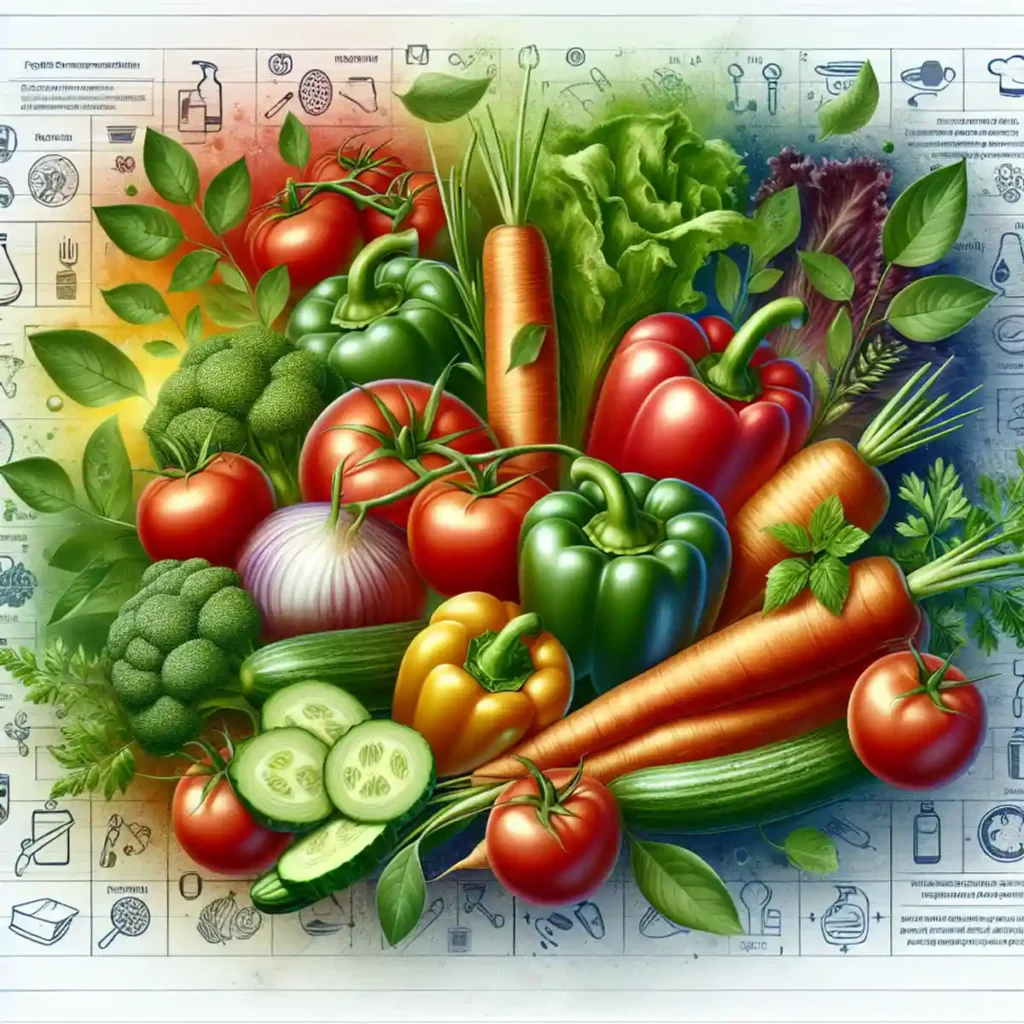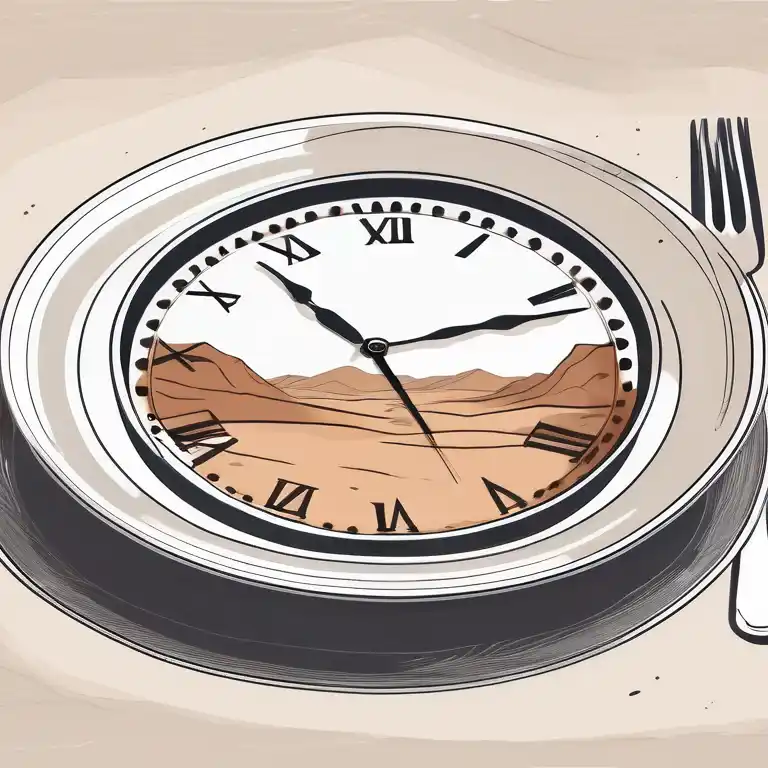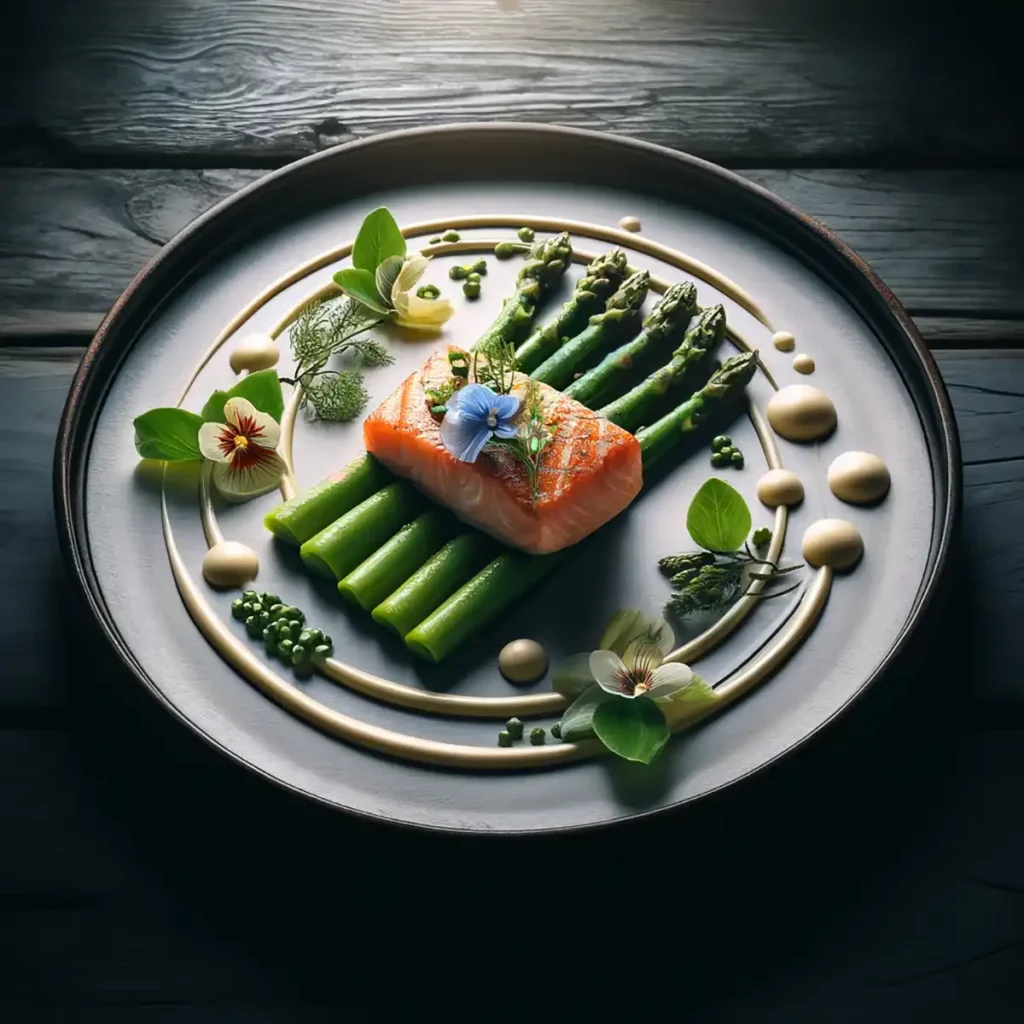How to Pay With Cash on DoorDash: A Step-by-Step Guide

DoorDash is a popular food delivery app that has revolutionized the way people order meals from their favorite restaurants. It provides a convenient platform for hungry customers to discover and order from a wide selection of local and national eateries. One of the things that sets DoorDash apart is its flexible forms of payment options including cash delivery. While most people are familiar with paying online using credit cards, debit cards, or digital wallets, there is also another convenient choice available: Cash on Delivery. In this article, we will explore what Cash on Delivery is all about and how you can make use of this online payment options when ordering through DoorDash. But it’s not just customers who can benefit from understanding this option – it’s also important for restaurants. Accepting cash for delivery services can play a significant role in helping restaurants attract more customers and cater to those who prefer or need to use cash. So, we’ll also be looking at what this means for restaurants and how they can manage cash orders effectively. Throughout this article, we’ll cover the following topics: Let’s jump right in and explore the world of cash payments on DoorDash! Understanding Cash on Delivery on DoorDash “Cash on Delivery” is a payment method that allows you to pay for your order upon its arrival, using cash. This is different from the usual way of paying online before getting your order. DoorDash added the cash option for loyal customers who may not have online banking or credit cards, or who simply like paying with cash. How Does Cash on Delivery Work? The Role of DoorDash Drive DoorDash Drive is a high-quality service provided by DoorDash that enables businesses to deliver their products directly to customers. While regular DoorDash service focuses mainly on food delivery from restaurants, DoorDash Drive offers a range of delivery for businesses including grocery stores, convenience stores, and retail shops. Benefits of Offering Cash on Delivery By offering different payment options like Cash on Delivery, DoorDash can: With this approach, DoorDash aims to make its direct delivery services accessible to more people and drive its overall business growth. How to Pay with Cash on DoorDash: A Customer’s Guide If you’re wondering “How to pay with cash on DoorDash?” the process is straightforward, but it does require a few specific steps during checkout. This payment method offers a convenient option for those who prefer not to use digital payment methods. Here, you’ll find detailed instructions and helpful tips to ensure a seamless transaction. Step-by-Step Instructions for Using Cash on Delivery Keep in mind that not all restaurants offer ‘Cash on Delivery,‘ so it’s essential to verify the availability of this option before placing an order. Tips for Preparing the Exact Cash Amount By following these guidelines, you can enjoy the convenience of paying with cash while ensuring a smooth and efficient delivery experience. Remember that using cash may also mean you won’t be able to add a tip through the app after delivery, so prepare any gratuity in cash if you wish to provide one. Handling transactions with care and consideration benefits everyone involved in the DoorDash experience. As you continue reading, you’ll learn about specific restaurants that embrace this payment method and how Dashers manage cash orders within their workflow. Restaurants That Accept Cash on DoorDash Acceptance of cash payments via DoorDash is not a universal feature for all restaurants. Instead, it is a choice that each establishment makes based on their specific business needs and customer demographics. Types of Restaurants Accepting Cash Payments The types of restaurants that choose to accept cash payments through DoorDash are typically those that cater to a diverse group of customers. They understand the need to offer multiple payment options to accommodate different customer preferences. These restaurants often include: By accepting cash on DoorDash, these establishments are able to reach customers who prefer or need to pay with physical currency. Pizza Chains Offering Cash on Delivery A significant segment of restaurants choosing this option are pizza chains. Pizza delivery has a long-standing tradition of cash transactions, and many pizza restaurants have carried this practice over into their partnership with DoorDash. Here are some popular pizza chains known for offering the Cash on Delivery option: Remember that the availability of the Cash on Delivery service can vary depending upon specific restaurant policies and geographical locations. Always check within your DoorDash app during checkout to confirm whether Cash on Delivery is available for your chosen restaurant. By catering to the needs of cash-preferential customers, these restaurants have enhanced their accessibility and broadened their customer base. This forward-thinking approach not only retains existing customers but also attracts new ones who value flexibility in payment methods. It’s important to note that not all DoorDash partners offer the Cash on Delivery option. In the following sections, we’ll explore how Dashers can opt-in to receive cash orders and the potential benefits and considerations of this payment method for restaurants, Dashers, and customers. Opting-In to Accept Cash Orders as a Dasher on DoorDash DoorDash gives Dashers the power to choose how they want to get paid. This means you can decide whether or not you want to accept cash orders from customers. If you’re interested in taking cash orders as a Dasher, keep reading to learn how you can opt-in for this feature. Understanding Cash Orders Before we dive into the process of opting-in for cash orders, let’s first understand what they are. Cash orders are simply orders where the customer chooses to pay with physical cash instead of using a card or digital payment method. It’s important to know that not all Dashers are automatically eligible for cash orders – it’s something you have to activate yourself. How to Opt-In for Cash Orders If you’re ready to start accepting cash orders, here’s what you need to do: Once you’ve completed these steps, congratulations! You’re now ready to receive cash orders from customers. What You Need to Know About Handling Cash
What Is Food Poisoning: Symptoms, Causes, and Treatment

Food poisoning is an illness that occurs when you consume food or water contaminated with harmful bacteria, viruses, parasites, or toxins. The common symptoms can range from mild to severe, including stomach upset, diarrhea, vomiting, and fever. With various pathogens lurking in unassuming foods, recognizing the significance of understanding food poisoning is critical for maintaining your health and well-being. Causes, Types, and Symptoms of Food Poisoning Food poisoning is an illness triggered by eating contaminated food or raw meat. It can be caused by various factors, including bacteria, viruses, parasites, and toxins. Causes of Food Poisoning Contamination can occur at various stages during the production, processing, or cooking of food. Key common sources include: Common Types of Food Poisoning Different microorganisms cause distinct types of food poisoning with varying degrees of severity: Symptoms of Food Poisoning Symptoms can appear within hours or take days to manifest depending on the cause: Specific pathogens can lead to particular clinical presentations: Recognizing these symptoms promptly improves outcomes by allowing for early intervention. Understanding the specific characteristics of each type of food poisoning influenced by its causal pathogen becomes crucial for proper management. The Role of Bacterial, Viral, and Parasitic Infections Food poisoning is not a singular condition; it’s a group of illnesses caused by different pathogens such as bacterial infections, viral infections, and parasitic infections. Each of these pathogens has distinct characteristics and modes of operation that can lead to the development of foodborne illnesses. Bacterial Infections and Food Poisoning Bacteria are prolific microorganisms that can cause severe symptoms when they contaminate food. They thrive in various environments, often multiplying quickly at room temperature. The bacteria release toxins into the food or directly infect the gastrointestinal tract once ingested. The body’s response to these bacterial invaders typically manifests as the classic symptoms of food poisoning. Viral Infections Leading to Foodborne Illnesses Viruses are another culprit behind food poisoning cases. Unlike bacteria that can grow in food, viruses require a living host to multiply. Nevertheless, they can still be transmitted through contaminated food or water. Viral infections usually result from contaminated food but can also be spread person-to-person or via contaminated surfaces. Parasitic Infections: A Less Common but Significant Threat Parasites are organisms that live on or in a host organism at the host’s expense. While less common than bacterial or viral causes, parasitic infections are an important aspect of foodborne illnesses that should not be overlooked. Parasites typically have complex life cycles and can survive in harsh conditions. They can remain dormant for long periods before becoming active once ingested by a host. Each type of infection—bacterial, viral or parasitic—can lead to different symptoms and require different approaches to treatment. It is crucial for public health authorities to identify the source of an outbreak to implement effective control measures. Awareness about these pathogens helps you understand why certain recommendations regarding food safety are made by health experts. Long-Term Effects, Complications, and When to Seek Medical Help Experiencing food poisoning may not merely entail enduring a few days of discomfort. In some instances, it could lead to long-term effects and serious complications if not properly addressed. One such consequence is Hemolytic Uremic Syndrome (HUS). It is caused by specific strains of E.coli infection and can result in kidney failure – a severe complication requiring immediate medical attention. Another potential long-term effect is Guillain-Barré Syndrome (GBS). This rare neurological disorder, which can cause paralysis, has been linked to Campylobacter bacteria – one of the most common causes of food poisoning. Additionally, certain types of food poisoning may progress into more severe conditions such as: These highlight the significance of understanding when to seek professional help following an episode of food poisoning. If symptoms are severe or persistent, it’s crucial to consult with a healthcare provider promptly. Key indicators that you should seek medical attention include: By being aware of these potential complications and understanding when to seek help, you can better manage the risks associated with foodborne illnesses. This awareness is not just about getting through the initial discomfort; it’s about safeguarding your health in the long term. Treating and Preventing Food Poisoning Incidents When you have food poisoning, the first goal is to relieve symptoms and prevent any further issues. Treating food poisoning typically starts with simple yet effective methods that you can do at home, unless you need professional medical attention. Relieving the Effects of Food Poisoning Here are some ways to alleviate the symptoms of food poisoning: Using Probiotics for Recovery Probiotics are live bacteria that can provide health benefits when consumed in adequate amounts. They are known for contributing to gut health and may help with the recovery from foodborne illnesses like food poisoning. Including probiotic-rich foods like yogurt or taking supplements may help restore the balance of good bacteria in your intestines that has been disrupted by the harmful pathogens causing food poisoning. Preventing Food Poisoning There are several practical steps you can take to significantly reduce the risk of getting food poisoning: By consistently following these measures, you can minimize your exposure to potential contaminants that can cause food poisoning. It’s important to remember that while some cases of food poisoning resolve on their own with basic care at home, it’s crucial to assess the severity of symptoms and seek medical assistance if needed. Staying Safe: Tips for Avoiding Food Poisoning When Dining Out Eating out is a delightful experience, but it carries the risk of food poisoning if the meal isn’t prepared or handled properly. You can significantly reduce this risk by following some practical guidelines to ensure food safety in restaurants and other dining establishments. Choose Reputable Restaurants Observe Cleanliness Assess Food Handling Practices Be Cautious with Certain Foods Ask Questions By being vigilant about where and what you eat while dining out, you can enjoy your meal with peace of mind. Remember that avoiding food poisoning is not just about the choices you make but also about paying attention to the signs around you. Conclusion
How Long Can You Survive Without Food?

In our modern world, where food is easily accessible and abundant, it’s easy to take for granted the importance of regular meals. But have you ever wondered how long you could survive without food? While the answer may vary depending on individual factors, there are some universal truths about the basics of human survival that shed light on this intriguing question. Understanding the Basics of Human Survival When it comes to survival, our bodies are remarkably adaptable. One of the key factors in determining how long a person can survive without food is their metabolism. Metabolism refers to the chemical processes that occur within our bodies to maintain life. It’s the way our bodies convert food into energy and use that energy to carry out essential functions. In times of food scarcity, our body weight and metabolism play a crucial role in determining how long we can survive. It provides us with the energy we need to perform daily activities, maintain body temperature, and keep our organs functioning. Without food, our metabolism shifts gears to conserve energy and ensure our survival. The Role of Metabolism in Survival During a time frame of food deprivation, our bodies enter a state known as fasting metabolism. In fasting metabolism, our bodies slow down a variety of processes to conserve energy. This includes reducing the rate at which we burn calories, lowering our body temperature, and decreasing the production of certain hormones. By slowing down these processes, our bodies can stretch the energy stores from our limited food resources for as long as possible. This is why someone with a slower resting metabolism may be able to survive longer without food compared to someone with a faster metabolism. The Importance of Nutrients for Body Function In addition to metabolism, the availability of essential nutrients also plays a vital role in determining how long a person can survive without food. Nutrients such as carbohydrates, proteins, and fats are the building blocks our bodies need to carry out essential functions. Carbohydrates, for example, are our body’s preferred source of energy. They provide the fuel our muscles and brain need to function optimally. When food is scarce, the body turns to alternative fuel sources, such as stored fat, to meet its energy needs. Proteins, on the other hand, are crucial for tissue repair and maintenance. Without an adequate intake of protein, our bodies can experience muscle wasting and a weakened immune system, making it even harder to survive in harsh conditions. Lastly, fats are an essential component of our cell membranes and are necessary for the absorption of fat-soluble vitamins. In times of food scarcity, our bodies rely on fat stores as a source of energy. While our bodies have incredible mechanisms to conserve energy and adjust to the lack of food, the absence of essential nutrients can have detrimental effects on our overall health and survival. The Science Behind Starvation Starvation is a state that occurs when the body has been deprived of food for an extended period of days or weeks without food. It’s a complex process that involves various physiological and psychological responses. The Body’s Response to Lack of Food When faced with a lack of food, the body goes into starvation mode. It initially relies on glycogen stores, which are glucose molecules linked together and stored in the liver and muscles, for a readily available source of energy. Once these initial glycogen reserves are depleted, the body starts breaking down its own fatty tissues for energy. This process is known as gluconeogenesis, where the body converts non-carbohydrate sources, such as amino acids from proteins, into glucose. This allows the body to continue providing energy to vital organs, such as the brain, which relies heavily on glucose for fuel. As the body continues to break down its own tissues, it enters a stage known as ketosis. Ketosis occurs when the body starts producing ketone bodies, which can be used as an alternative fuel source by the brain and other tissues. It’s a survival mechanism that allows the body to adapt to prolonged periods without food. The Stages of Starvation Starvation occurs in stages, each with its own set of physiological changes. Initially, the body taps into its glycogen stores to maintain energy levels. As these stores are exhausted, the body begins utilizing its fat reserves, leading to weight loss. After an extended period without food, the body enters a state of extreme catabolism, where it starts breaking down muscle tissues for energy. This can result in muscle wasting, weakness, and a decreased ability to perform physical tasks. Eventually, as the body’s fat and muscle reserves continue to deplete, it enters a stage of severe malnutrition. At this point, the body’s immune system becomes compromised, making the individual more susceptible to infections and diseases. Without intervention, prolonged starvation can lead to organ failure and ultimately, death. Factors Influencing Survival Without Food While the science behind survival without food is fascinating, it’s essential to recognize that individual factors play a significant role in determining how long someone can survive in such conditions. Individual Health and Fitness Levels An individual’s overall health and fitness levels can significantly impact their ability to survive without food. Those who are in better physical shape and have a higher muscle mass may be able to sustain themselves for longer periods compared to those who are less fit. Physical fitness allows the body to function more efficiently, making the most of its limited resources. The average person with pre-existing health conditions may have lower resilience to periods of starvation and may experience more severe consequences in a shorter period. Hydration and its Impact on Survival In addition to access to food, hydration plays a critical role in survival. The human body can survive longer without food than without water. Dehydration can lead to a multitude of complications, such as electrolyte imbalances and impaired cognitive function. Without sufficient water intake, the body’s ability to carry out its necessary functions diminishes, making it
Did You Know? The Top of the Plate Where Food Is Placed Has a Name!

Food presentation is an art form within the culinary world, where the arrangement and overall aesthetic of a well-plated dish play a crucial role. Chefs spend years perfecting their plate selection and food plating techniques, understanding that the visual appeal of a dish can be just as important as its taste. The top of the plate where food is placed, the stage upon which culinary masterpieces are unveiled, serves not only as a canvas for chefs but also enhances the dining experience by appealing to the diner’s eyes first. You might find it intriguing that this flat plate surface, dedicated to food placement, isn’t just referred to as “the top of the plate.” It carries a specific name within professional kitchens and among culinary enthusiasts. This term encapsulates its importance in meal presentation and signifies the thoughtful consideration given to even the smallest details in gastronomy. Understanding the Functionality of a Plate When you think about plates, you might not consider how they work. We know from experiences at fine dining restaurants the variety of plates that accompany our dinner knife and fork. A bread plate and a salad plate, but did you know every part of a plate has a purpose, especially the top area of the main dinner plate where the food goes. In this section, we’ll explore why this part of a plate is so important. The Role of the Top Area Location and Characteristics The top area of a plate is the wide, flat surface where you put your food. It’s the first thing you see when a plate is placed in front of you. The design is meant to be flat with slightly curved edges to prevent spills. Dinner plates can come in different sizes and shapes, like round or square, or even more creative decorative plates. But no matter what it looks like, the main function remains the same – it’s where your food takes center stage. Why Is It Flat? The flat surface of a plate isn’t just for looks; it serves practical purposes too: So you see, the flat surface isn’t just there as a background; it plays a crucial role in how your food looks and tastes. By understanding why plates are designed as they are, you can start to appreciate the effort that goes into presenting each meal. The culinary world takes this attention to detail seriously – so much so that there’s a specific term for the top area of a plate used by professionals in kitchens worldwide. In the next section, we’ll uncover this term and explore its origins and significance in the culinary arts. Revealing Its Name: The Culinary Term for the Top of the Plate The moment has arrived to uncover the well-guarded secret of culinary arts – the name of that top part of the plate where food is placed, a chef’s creativity turns into an edible masterpiece. This flat surface, the stage for food presentation, carries a designation that might surprise you. The top part of a plate, where all the magic happens, is referred to as the “well” in culinary terminology. Yes, it’s not a fancy term, but its role in dining experiences is monumental. The well is where every bite starts its journey to dazzle your taste buds and deliver the chef’s story right on your plate. It’s here that you’ll find meticulously arranged components, each complementing others while standing out in its unique way. The Origin of the Term ‘Well’ The term ‘well’ might sound simple, but its origin is deeply rooted in culinary history. It originates from French cuisine, known for its finesse and emphasis on presentation. In French, it’s called “fond de plat,” literally translating into ‘base or bottom of the dish,’ but it refers to the flat top part of the plate where food is served. The Significance of the Well in Food Presentation The well is not just about aesthetics; it’s a demonstration of how different elements work synergistically to enhance culinary experiences. From color and texture contrasts to arrangement patterns and empty space utilization – everything counts when making use of this canvas. Here are some key aspects highlighting the importance of the well: Every detail matters when presenting in the well, turning plate functionality into an art form itself. The Mastery of the Well by Chefs This term isn’t just thrown around casually; it holds great esteem in professional kitchens. Chefs spend years mastering techniques to make optimal use of this precious space. It’s not just about making food look pretty. It’s about crafting a visual narrative that complements the culinary journey, making each dish an experience to remember. Using the term ‘well’ in your dining table discussions will not only elevate your culinary conversations but also provide you with a deeper understanding of the art of food presentation. It might seem like a small detail, but knowing this term is a testament to your appreciation for the culinary arts. Now that you’re equipped with this knowledge, the next time you dine out or cook a meal at home, take a moment to appreciate the well. Recognize the thoughtfulness and creativity that goes into utilizing this flat surface to create a harmonious dining experience. Conclusion The world of culinary arts is vast and goes beyond just knowing the name of the top area of a plate. There are many interesting things to explore: If you’re eager to learn more about food and cooking, here are some suggestions: Remember, everyone starts somewhere. Your journey into the culinary world may have begun with understanding the top area of a plate, but it doesn’t end there. Embrace this newfound knowledge and let it inspire you to explore further. Understanding the art of cooking can transform not just your meals, but also your overall dining experiences. FAQs (Frequently Asked Questions)
Eating Your Way to Recovery: The Best Food to Eat When Sick

As the old adage goes, “You are what you eat,” but when sickness strikes, this phrase takes on a deeper meaning. Navigating the landscape of nutrition during illness can be daunting, as the body’s typical dietary needs shift to support recovery. The right foods can be your allies in the battle against viruses, infections, and digestive disturbances. This article will serve as a culinary compass to guide you through the often-overlooked realm of therapeutic eating, focusing on the best foods to consume when sick. From the simplicity of the BRAT diet to the immune-boosting properties of leafy greens, we’ll delve into how specific foods can pave the way to health. Whether it’s an upset stomach or the common cold, the kitchen might just hold the key to your recuperation. Join us as we explore the healing potential that lies in our meals and how to eat your way to recovery. Foods for Upset Stomach When battling an upset stomach, reaching for the right foods can make all the difference. A stomach bug often leaves us with symptoms like nausea, diarrhea, and discomfort, urging us to be selective with our diet. The goal is to choose foods that are mild and easy to digest, helping to alleviate symptoms rather than exacerbate them. What to Eat When You Have an Upset Stomach Navigating food choices with an upset stomach can be tricky. The priority is to stick to bland and simple foods that are gentle on the digestive system. Start with options like saltine crackers, plain rice, clear broths, and skinless baked chicken. Over time, you can introduce more substantial choices like roasted vegetables and banana. To combat nausea, try sipping on clear fluids like ginger ale or ginger tea, which can help to settle your stomach. Maintaining hydration is crucial, so remember to drink plenty of water or suck on ice chips if plain water is unappealing. The BRAT Diet: Bananas, Rice, Applesauce, and Toast The BRAT diet—consisting of bananas, rice, applesauce, and toast—is often recommended for its simplicity and tolerability during stomach upsets. These foods are low in fiber, which can help to halt diarrhea and give your digestive system a much-needed break. While it’s effective for short-term relief, it’s not nutritionally comprehensive and should be augmented with other foods to create a balanced diet. Ginger: A Natural Remedy for Upset Stomach Ginger is a versatile and effective natural remedy for an upset stomach. Its anti-inflammatory properties soothe the digestive system, and its efficacy in reducing nausea is well documented. You can consume ginger in several forms—fresh ginger root in cooking, steeped as tea, or even as chewable candies. A simple recipe for ginger tea involves steeping sliced fresh ginger in hot water and adding a touch of honey for sweetness if needed. The Benefits of Garlic for Stomach Health With its array of health benefits, including antibacterial and antiviral properties, garlic is a formidable ally for stomach health. It’s thought to enhance immune response and may even help prevent common ailments like the cold and flu. Incorporating garlic into meals or taking aged garlic supplements could help boost your body’s natural defenses. The Healing Power of Chicken Soup The healing power of chicken soup extends beyond folklore. Rich in nutrients and hydration, chicken soup is soothing for the throat and comforting for the soul. Homemade recipes are especially beneficial as they tend to contain fewer additives and preservatives than store-bought versions. For an additional health boost, preparing chicken soup with bone broth can provide extra collagen and minerals. The Importance of Proper Nutrition for Recovery Proper nutrition is a cornerstone of recovery from any sickness. Foods rich in vitamins, minerals, and antioxidants support the immune system and promote tissue repair. Fresh fruits, leafy greens, and lean proteins are essential for providing your body with the nutrients it needs to heal. Additionally, staying hydrated and getting adequate rest are integral to your recovery journey. Bland Foods for Soothing an Upset Stomach When your stomach is unsettled, bland foods are your best friend. They include options such as oatmeal, boiled potatoes, and plain toast—with minimal seasonings or additives. These foods are easy on the stomach and less likely to cause further irritation or discomfort. It’s advisable to avoid high-fat, spicy, and acidic foods that could aggravate symptoms. The Role of Dairy in Digestive Health Dairy’s role in digestive health can vary from person to person. While foods like yogurt with active cultures can provide beneficial probiotics, dairy can sometimes exacerbate symptoms like diarrhea or mucus production in those who are sensitive. Listen to your body and, if dairy seems to be a problem, consider probiotic supplements or probiotic-rich non-dairy alternatives like kombucha or sauerkraut. Following these dietary guidelines can help manage symptoms during illness and put you on the road to recovery. However, should your symptoms persist or worsen, it’s important to consult with a healthcare professional. Boosting Immune Health with Nutritious Foods When you’re feeling under the weather, the food you eat can serve as both comfort and medicine. Certain foods help bolster your immune system and can play a critical role in how you combat infections. Nourishing your body with the right ingredients can provide the necessary support your immune system needs to fight off illness. Focusing on immune-boosting foods that are rich in vitamins, antioxidants, and other essential nutrients can give your body an extra line of defense against pathogens. Foods such as citrus fruits and leafy greens are packed with vitamin C, while probiotics found in foods like Greek yogurt support your gut health—a significant factor in immunity. Ingredients such as garlic add not just flavor, but also powerful anti-inflammatory and antimicrobial properties to your diet. And let’s not forget the comfort and nutrients that a classic bowl of chicken soup provides—a soothing blend that supports hydration, nutrition, and immune health all at once. By integrating these healthful foods into your diet, particularly when you’re not feeling your best, you’re not only alleviating symptoms but also
Why are Mushrooms Important to the Food Chain: Fungi Unveiled

Imagine a world without mushrooms, those enigmatic organisms quietly orchestrating life’s continuity from the shadows of the forest floor. Often overlooked, fungi perform indispensable duties that underpin entire ecosystems. Fungi’s pivotal role in the food chain is a tale of unseen influence and ecological necessity. Their place in nature is unique; neither plant nor animal, fungi occupy a kingdom all their own, one that thrives on the very cycle of life and decay. As we delve into the inner workings of ecosystems, the spotlight often misses the quiet contribution of fungi, especially mushrooms, to the intricate web of existence. This insightful article will unveil why mushrooms are vital to the food chain, exploring their roles as decomposers, symbionts, and even producers. Through a journey into organic matter breakdown, symbiotic relationships, and their unexpected nutritional benefits, prepare to discover the world of fungi like never before, illuminating their unheralded yet immense impact on our lives and the planet. The Role of Fungi in the Food Chain Fungi, a kingdom of life distinct from plants and animals, embody a critical role in our ecosystems, markedly impacting the food chain. These organisms are chiefly recognized as nature’s decomposers — they possess the unique ability to break down organic matter that many other organisms can’t. As decomposers, fungi consume dead plants, animals, and other organic material, recycling the nutrients and returning them to the soil. This creates an ongoing supply of critical organic molecules that become the building blocks for new life. Among fungi, mushrooms are particularly noteworthy. Species like the Oyster mushroom not only decompose dead organic materials but can also break down pollutants, thanks to their potent chemical compounds, playing an essential role in detoxifying environments. Furthermore, through symbiotic relationships, such as mycorrhizal associations, fungi are invaluable partners to plants. By extending the root system of their hosts, they enhance water and nutrient uptake, showing that their role extends far beyond decomposition. Without fungi like mushrooms to decompose organic matter, the cycle of nutrients would be halted, stifling the growth of new plants and, by extension, the entire food web aboveground. Their efficient dealing with organic material ensures that primary producers – plants – obtain the necessary nutrients to thrive, supporting primary consumers – herbivores – and secondary consumers – carnivores – and maintaining the delicate balance of our ecosystems. Moreover, mushrooms serve directly as a source of food for various wildlife and even for humans. They are high in dietary fiber, proteins, vitamins, and minerals, making them prized as food and in food supplements. Companies such as Marlow Foods, leveraging the versatile nature of fungi, produce meat alternatives that enhance the food sector, giving insights into the significance and potential of mushrooms that extend beyond their ecological roles. In summary, in the grand tapestry of the food chain, mushrooms and fungi at large are indispensable weavers that render the flow of life possible through their breakdown and creation of organic matter. Understanding the Concept of the Food Chain The food chain concept greatly simplifies the flow of energy and nutrients through an ecosystem. At its base, primary producers like plants harness chemical energy from the sun and convert it into organic compounds in a process called photosynthesis. These primary producers are then consumed by primary consumers – often herbivores – which form the next link in the chain. Secondary consumers, including carnivorous animals, follow by preying on these herbivores. Fungi, which include diverse forms such as yeasts, mushrooms, and molds, fit uniquely in this chain. They are neither plant nor animal and do not photosynthesize. Instead, they acquire chemical energy stored in organic matter through decomposition. Acting as nature’s recyclers, they release organic molecules back into the environment once they have performed their digestive processes externally with enzymes that break down complex organic material. Furthermore, the food chain extends to symbiotic relationships like those seen in lichens. Here, fungi form partnerships with algae, with both parties benefiting mutually; the algae produce food through photosynthesis, while the fungus offers a structure for growth and nutrient absorption. These complex interactions illustrate the intricate web of life, where energy is not merely passed along a linear path but shared among organisms in a dynamic balance. The Unique Position of Fungi in the Food Chain Fungi occupy a unique niche within the food chain; they are neither wholly producers nor consumers. Through processing dead organic material, they generate and recycle essential nutrients, catalyzing energetic flows within ecosystems. This role is not only beneficial but crucial; without fungi, the breakdown of tough substances like cellulose and lignin found in plant cell walls would be significantly impaired. Many fungi enter into mutually beneficial partnerships with plants, exchanging nutrients and supporting the growth of vast networks of plants – an ecological role that defines much of the terrestrial life. These mycorrhizal relationships typify how fungi are entwined with the overall health of ecosystems, facilitating the transfer of nutrients between soil and plants, a critical service for both natural and agricultural landscapes. On the darker side, some fungi can become antagonists in the food chain. Certain species are capable of decimating populations of plants by causing diseases or producing toxic compounds detrimental to both plant and animal life. The duality of fungi highlights their power within the food chain – as sustainers and potential destroyers. Their decomposition action not only fosters soil fertility, propelling the growth of new plant life but also ultimately sustains food for herbivores and all subsequent links in the chain. Beyond their ecological duties, fungi, especially mushrooms, fulfill an essential role in human food systems. They are cultivated globally, adhering to standards regulated by entities such as the Food Standards Agency. Their wide range reflects diversity in both function and nutritional content, solidifying their place not just as decomposers or symbionts, but as a direct and indispensable food source. In essence, the food web would unravel without fungi. The recyclers of nature, the partners of growth, and the providers of sustenance, fungi perform an
Beauty Is in the Eye of the Beholder: A Deep Dive

Ever found yourself mesmerized by something only to find out others don’t share the same enthusiasm? That’s the magic of perception, especially when it comes to beauty. The phrase “beauty is in the eye of the beholder” has been tossed around in conversations, but have you ever paused to truly unpack its meaning? Well, I’m here to take you on a journey through the looking glass to explore the depths of this timeless saying. The Origins of the Phrase Before we dive into the whirlpool of interpretations, let’s take a moment to trace back to where this phrase first fluttered its wings. Understanding its roots gives us a clearer picture of how it has shaped our perception of beauty over the centuries. The Literary Beginnings The phrase “beauty is in the eye of the beholder” is often attributed to Margaret Wolfe Hungerford who penned it in her novel ‘Molly Bawn’ in 1878. However, the concept predates Hungerford, with similar sentiments echoed in ancient Greek texts. It’s fascinating to see how this idea has been a part of human consciousness for so long, morphing through time yet remaining relevant. Delving into literary history, we uncover that philosophers like Plato and Socrates also toyed with the notion of beauty being subjective. Their dialogues serve as a testament to the age-old debate on whether beauty exists independently of our perceptions. This literary journey not only enriches our understanding but also connects us with thinkers from millennia ago. Evolution Through Time As we fast-forward through history, the interpretation of “beauty is in the eye of the beholder” has been shaped by cultural, social, and technological changes. The Renaissance era, with its celebration of human beauty and form, offered a stark contrast to the Middle Ages’ more spiritual and less corporeal appreciation of beauty. In the modern era, the advent of photography and later, social media, has further complicated our relationship with beauty. These platforms have become mirrors reflecting society’s evolving standards and ideals of beauty, often blurring the lines between individual preference and collective influence. Psychological Perspectives Peering through the psychological lens, the phrase gains new dimensions. It’s not just about what we see, but how our brains process and interpret these visual cues. Let’s delve into the cognitive and emotional layers that influence our perception of beauty. The Role of Perception Perception is the brain’s interpretation of sensory information, and it plays a pivotal role in determining what we find beautiful. Studies in psychology suggest that our experiences, culture, and even biological factors shape our perception. This means that beauty isn’t just a static image; it’s a dynamic interplay between the object and our minds. Moreover, the concept of ‘aesthetic pleasure’ highlights how our brains are wired to seek and appreciate beauty. This pleasure is subjective, varying from person to person, which underscores the essence of the phrase “beauty is in the eye of the beholder.” Emotional Connections Our emotional connections to objects or people can significantly influence our perception of their beauty. A cherished heirloom, though worn and aged, may hold unparalleled beauty to its owner. Similarly, love and affection can transform our perception, making the beloved the epitome of beauty in our eyes. This emotional dimension of beauty reveals that it’s not just about external appearances but also about the stories, memories, and feelings that we associate with the beheld. The Influence of Media In today’s digital age, the media plays a substantial role in shaping our perceptions of beauty. Advertisements, movies, and social media platforms bombard us with images of what is considered beautiful, often setting unrealistic standards. The constant exposure to these idealized portrayals can distort our own views of beauty, leading to insecurities and a sense of inadequacy. It’s crucial to be mindful of the media we consume and to remember that beauty comes in diverse forms, beyond what is showcased in glossy magazines or filtered social media posts. By recognizing the influence of media on our perception of beauty, we can take steps to cultivate a more inclusive and authentic understanding of what it means to be beautiful. Cultural Influences on Beauty As we navigate through different cultures, it becomes evident that beauty standards are not universal. Each culture has its own lens through which beauty is defined and appreciated. This diversity enriches our understanding and challenges us to broaden our horizons. Beauty Across Cultures From the curvaceous figures celebrated in certain African cultures to the porcelain skin favored in East Asian societies, beauty standards vary dramatically across the globe. These preferences are deeply rooted in historical, environmental, and social factors, illustrating that beauty is not only in the eye of the beholder but also in the cultural tapestry of their society. Exploring these diverse standards not only expands our appreciation for beauty but also fosters a deeper respect for cultural differences. It’s a reminder that beauty transcends borders and is as varied as humanity itself. The Impact of Globalization Globalization has woven the world’s cultures closer together, influencing and sometimes homogenizing beauty standards. The international reach of media and fashion has introduced a more uniform vision of beauty, yet, the essence of “beauty is in the eye of the beholder” persists. Amidst this global exchange, individual and cultural preferences continue to shine, celebrating the uniqueness of personal and collective perceptions of beauty. This interplay between global influences and personal preferences highlights the resilience of the phrase, reminding us that beauty’s true essence remains subjective and diverse. Conclusion: Embracing the Beauty of Subjectivity Our journey through the origins, psychological underpinnings, and cultural influences of the phrase “beauty is in the eye of the beholder” reveals a rich tapestry of interpretations. It’s a celebration of diversity, individuality, and the deeply personal experience of beauty. As we navigate our own paths, let’s cherish this subjectivity, allowing ourselves to find beauty in the most unexpected places and faces. If this exploration has sparked your curiosity or if you’re seeking to dive deeper into the realms of beauty and perception,
How to Block People on TikTok: A Step-by-Step Guide

TikTok is a lively social media platform where millions of users express themselves and share snippets of their lives. While it’s a place for creativity and connection, the large user base also highlights the importance of privacy and safety on TikTok. Like any online community, encountering negative interactions is possible — this is where how to block people on TikTok becomes an essential tool in your digital arsenal. This guide is designed to empower you with the knowledge to manage your TikTok experience. You’ll discover how to block someone on TikTok effortlessly, ensuring that your online space remains enjoyable and free from unwanted content. Whether you’re using the app on your phone or the desktop version, these steps will enable you to take charge. Let’s explore ways to make your TikTok journey as positive and safe as can be. Why You Might Need to Block Someone on TikTok A surge in popularity can sometimes lead to the undesirable side effect of attracting unwanted attention. This is especially true for TikTok, a platform that encourages users to express themselves creatively through short videos. Unwanted attention on TikTok might come from strangers who make unwelcome comments, send unwanted messages, share inappropriate content, or invade your privacy. Blocking emerges as a key tool in dealing with this issue. It helps you control who can interact with your content, ensuring that your TikTok experience remains positive and enjoyable. Negative comments and trolls are an unfortunate reality of any social media platform, and TikTok is no different. These elements can create a hostile environment that affects a user’s experience negatively. By blocking individuals leaving such comments, you protect yourself from their negativity and create a safer, more welcoming TikTok feed. Privacy management is another critical aspect of your TikTok experience. The ability to use the block feature gives you the power to control who can see and interact with your content. This feature is vital in maintaining your online safety and privacy. Finally, let’s not forget about curating an enjoyable feed and positive digital environment. Blocking offensive or inappropriate accounts allows you to tailor your TikTok feed according to your preferences, ensuring only suitable content appears on your screen. In the following sections, we’ll delve into how to block someone on TikTok – both via the mobile app and desktop version – so you can take control of your online personalized experience. How to Block Someone on TikTok Blocking someone on any social media platform should be a hassle-free process, and TikTok is no exception. This guide will walk you through the steps to effectively block accounts on TikTok. It’s important to note that the process is identical for both profiles and comments or interactions. Step-by-Step Guide to Blocking on TikTok The process may vary slightly depending on whether you’re using a mobile device or accessing TikTok from a desktop computer. Blocking on Mobile If you’re among the majority of users who access TikTok via the mobile app, follow these simple steps: Blocking on Desktop For those using a desktop computer, the process is just as straightforward: Blocking on TikTok is a straightforward process designed to prioritize your safety and peace of mind while using the platform. Whether it’s on mobile or desktop, these steps provide a clear path to help manage unwanted interactions or content. However, remember that every action taken should contribute to a positive, respectful, and inclusive community on TikTok. What Happens When You Block Someone on TikTok? Blocking a person on TikTok has immediate effects that help protect your privacy and control your content: These effects are designed to make TikTok a safer and more enjoyable platform for you. They act as protective measures to safeguard your creativity from any kind of negativity or disruption. How to Unblock Someone on TikTok Everyone deserves a second chance, and unblocking on TikTok is as simple as blocking. The process is reversible, giving you the flexibility to manage your connections. Here’s how: If you don’t remember the username: TikTok will immediately lift all restrictions between you and that user, returning things to how they were before you blocked them. Blocking and unblocking serve as practical tools for managing your TikTok experience, ensuring it remains enjoyable and respectful. Conclusion Blocking people on TikTok is important for protecting your digital boundaries. It allows you to control who can interact with your content and ensures that your online space remains positive and valuable. Here are some key takeaways: TikTok thrives as a space for creative expression when each individual takes steps toward fostering a safe and inclusive community. It’s these actions, like thoughtful blocking, that reinforce respect and understanding among users, thereby enriching everyone’s safer experience. FAQs (Frequently Asked Questions)
What is a Beauty Advisor vs. Beauty Consultant: Understanding the Differences

In the dazzling world of the beauty industry, the terms ‘Beauty Advisor’ and ‘Beauty Consultant’ often twinkle under the glamorous lights, leaving many to wonder about their exact roles. While both titles sound similar and indeed relate to the realm of cosmetics and skincare, each carries its unique significance and set of responsibilities. As we peel back the layers of the beauty industry, understanding these roles becomes essential for those navigating its vast landscape. The role of a Beauty Advisor often unfolds on the bustling shop floors of retail chains, where they serve as the bridge between products and patrons. They are the knowledgeable faces providing tailored advice to customers, guiding them through a sea of creams, powders, and potions. Their influence significantly shapes the retail experience, as they give life to the products lining the shelves. Conversely, the profile of a Beauty Consultant frequently emerges in the serene setting of a chic salon or an upscale spa. Armed with a deeper level of expertise, they design comprehensive beauty strategies, often delivering personalized services that extend beyond the superficial. This article seeks to dissect these professions, clarifying their definitions, roles, and the education required to thrive in each, thus demystifying the nuances that set a Beauty Advisor apart from a Beauty Consultant. What is a Beauty Advisor A Beauty Advisor is a specialized consultant who occupies a pivotal position within the health and beauty retail sector. These trained professionals offer informed guidance and personalized service to customers seeking to enhance their appearance through skincare and makeup products. Equipped typically with at least a high school diploma, Beauty Advisors deploy their knowledge of skin types, hair types, and beauty trends to provide expert advice tailored to each individual’s needs. Their proficiency extends to performing product demonstrations, orchestrating makeovers, and constructing attractive displays to captivate clientele. Leveraging their strong communication skills, Beauty Advisors not only answer customer questions and manage customer complaints but also perform follow-up calls to ensure the amazing customer experience continues beyond the store. Keen on fostering enduring customer relationships, these advisors epitomize the essence of passion for client service and guest service, striving to transform routine retail transactions into memorable encounters. They are often the driving force in meeting sales goals and ensuring that the beauty counter presents an inviting and organized tableau through efficient inventory management and inventory control. Definition of a Beauty Advisor A Beauty Advisor is a dedicated frontline representative of cosmetics and skincare brands, holding the essential responsibility of bridging customers with appropriate beauty solutions. Their work involves an in-depth consultation process where they attentively listen to clients’ desires, discern skin types and skincare concerns, and then translate this insight into a tailored selection of products. With a robust understanding of a diverse array of skin care products—including their wellbeing benefits—Beauty Advisors facilitate educated decisions for customers that align with personal preferences and financial considerations. Excellent communication skills are vital, enabling Beauty Advisors to demystify the functionalities and advantages of various items, from foundational skin care to the latest in cosmetic innovations. Their consultative approach leverages an aesthetic acumen that ensures each customer’s unique style is understood and catered to, culminating in recommendations that resonate on a personal level. Role and Responsibilities of a Beauty Advisor The role of a Beauty Advisor encompasses a multitude of duties, each targeted toward enhancing the customer’s beauty journey. Primarily responsible for guiding clients through the vast world of beauty products, Beauty Advisors must ascertain the customer’s skin care and hair care requirements. This entails listening to concerns, evaluating skin and hair types, and staying abreast of the newest industry trends and techniques. Upon understanding the customer’s needs, Beauty Advisors recommend suitable products, often giving live demonstrations to illustrate product effectiveness and application methods. They serve not only as consultants but also as educators, sharing their knowledge to empower customers to make informed purchasing decisions. Duties often extend to the operation of cash registers, managing retail sales transactions, and maintaining appealing product displays. Exceptional customer service is at the core of a Beauty Advisor’s responsibilities, which also include following up with customers after their purchase, handling customer complaints with grace, and relentlessly pursuing the goal of an amazing customer experience. Beauty Advisors are also responsible for inventory management, ensuring the availability of popular items and the allure of the sales floor through attractive and orderly displays. Importance of a Beauty Advisor in the Retail Industry The contribution of Beauty Advisors to the retail industry is immense, as they significantly elevate the customer’s shopping experience. Their in-depth knowledge and personalized assistance often translate into customer loyalty and recurring business, hallmarks of a robust customer relationship. By providing outstanding guest service and fostering a passion for client service, Beauty Advisors encourage customers to return, boosting retail sales and helping to achieve or surpass sales goals. Furthermore, Beauty Advisors contribute to the operational efficiency of retail settings. Through adept inventory control and management, they ensure that stock levels are monitored, which keeps the sales floor replenished and reduces the risk of customer disappointment due to unavailable products. Above and beyond sales, Beauty Advisors are ambassadors of customer confidence and self-expression. By helping individuals discover products that enhance personal beauty and wellbeing, these advisors curate experiences that customers value and remember, thereby cementing the crucial role beauty advisors play in the success of the retail beauty industry. Customers not only leave with their purchases but also with an employee discount and the feeling that their beauty needs and desires have been genuinely understood and met. What is a Beauty Consultant A Beauty Consultant is a professional who provides expert advice and guidance to customers within the retail beauty industry. They work primarily in shops or department stores, where they engage with customers to offer tailored advice, demonstrate the features and benefits of cosmetic and skincare products, answer inquiries, and ensure a positive shopping experience. With an extensive knowledge of cosmetics, skin-care products, and the latest beauty trends, Beauty Consultants help customers
What is a Wellness Coach?

What is a wellness coach? A wellness coach is a professional guide and mentor who helps individuals achieve their personal physical and emotional health goals. With a focus on the client’s overall strengths and abilities, these coaches provide general life choices that fit an individual’s lifestyle rather than suggesting specific diets or exercises. The role of a wellness professional is multifaceted. They serve as motivators, educators, accountability partners, and cheerleaders. By offering tools and strategies tailored to each client’s needs, they empower individuals to take charge of their health decisions and create sustainable improvements in their lives. Holistic health is central to the philosophy of wellness coaching. Recognizing that physical, emotional, mental, and spiritual wellness are interconnected, wellness coaches guide clients towards a balanced life. This approach goes beyond merely addressing symptoms; it seeks to uncover underlying issues and promotes overall well-being. Wellness coaching is non-prescriptive; it’s an iterative, personalized journey towards holistic wellness. The duration of coaching varies based on individual needs, ranging from a few months to longer periods. Emphasizing self-care, wellness experts support clients in examining behavior, mental/emotional reactions, and creating action plans for healthier lifestyles. Is Health and Wellness Coaching a Form of Counseling? Wellness and health coaching often gets compared to counseling due to the personal nature of the support provided. However, there are distinct differences between the two: 1. Scope of Practice Wellness coaches focus on the present and future, setting health-related goals and encouraging positive lifestyle practices. Unlike licensed counselors or therapists, coaches do not delve into past traumas or psychological conditions. 2. Training and Certification Counselors have formal education in psychology and are licensed to diagnose and treat mental health disorders. Wellness coaches are trained to motivate and guide clients towards healthier behaviors but do not require a license for mental health. 3. Methodology The techniques used in wellness coaching are rooted in motivational interviewing, goal-setting, and accountability strategies. While some counseling approaches may use similar tools, counseling tends to be more exploratory and deep-diving into emotional challenges. 4. Collaboration with Healthcare Professionals Wellness coaches often collaborate with healthcare providers to offer comprehensive care but do not replace medical or psychological treatment. It’s essential for individuals seeking guidance to understand that while wellness coaching can be highly beneficial for those looking to improve general well-being, it is not a substitute for professional counseling services when dealing with mental health issues. Clients with more profound psychological needs should be referred to a qualified counselor or therapist. How Do Wellness Coaches Help Clients Achieve Their Goals? Understanding wellness coaching is key to recognizing its unique role in guiding clients towards a balanced and healthy lifestyle. Rather than prescribing one-size-fits-all solutions, wellness coaches provide personalized support tailored to each client’s specific needs, promoting long-term behavior change. Learning wellness is an essential aspect of this process, as it can enhance your understanding of creating a balanced quality of life. 1. Personalized Support and Accountability A significant aspect of the coach-client relationship is the foundation of trust and accountability. Coaches encourage clients to set realistic goals and offer tools and strategies to help maintain focus and motivation. They are partners in your journey, celebrating successes and navigating challenges with you. 2. Collaboration with Nutritionists and Dietitians Wellness coaches often work in tandem with nutritionists, dietitians, and other healthcare professionals to ensure a comprehensive approach to your health. The coaching process is improved drastically with an integrative approach of wellness and health care professionals. 3. Holistic Approaches to Health The philosophy behind wellness coaching embraces the interconnectedness of the mind, body, and spirit. This holistic approach looks beyond just physical health, addressing emotional well-being, mental resilience, and spiritual fulfillment as integral parts of the wellness puzzle. By understanding that every aspect of life impacts overall health, wellness coaches help you cultivate habits that improve not only your physical fitness but also enhance mental clarity and emotional stability. For those exploring natural methods to support their emotional well-being, discovering products like magnesium spray for anxiety relief can be part of this holistic toolkit. By focusing on these areas, wellness coaches assist you in creating a sustainable path towards improved well-being that resonates with your personal values and lifestyle preferences. The Transformative Benefits of Working with a Wellness Coach Wellness coaching provides numerous benefits to individuals seeking to improve their overall well-being. When you partner with a wellness coach, you embark on a transformative journey that not only focuses on your physical health but also your emotional and mental well-being. Personalized Support and Accountability One of the most significant benefits of wellness coaching is the personalized support and accountability it offers. Your wellness coach is your cheerleader, mentor, and guide, helping you navigate your path to better health. They provide motivation, encouragement, and constructive feedback to keep you focused and committed to achieving your wellness goals. Sustainable Improvement in Overall Well-being Working with a wellness coach often leads to sustainable improvement in overall well-being. This is achieved through long-term behavior change that focuses on developing healthy habits and routines. For example, you might work with your coach to incorporate regular exercise into your lifestyle or adopt healthier eating habits. Learning New Skills and Strategies An integral part of this transformative process is learning new skills and strategies for managing stress, improving sleep quality, and promoting emotional health. Time management skills tools can assist with professional goals, while coaching sessions can assist with personal elements offering a wide range of services to clients. Empowerment Through Self-Confidence Wellness coaching also empowers you by boosting your self-confidence and self-efficacy. As you achieve your wellness goals, you gain a stronger belief in your ability to make positive changes in other areas of your life. Positive Effects on Well-being As a result of working with a wellness coach, many clients report experiencing: By harnessing these benefits, wellness coaching can be a powerful tool for transforming your life. Finding the Right Wellness Coach for Your Journey Selecting a wellness coach is a crucial step in